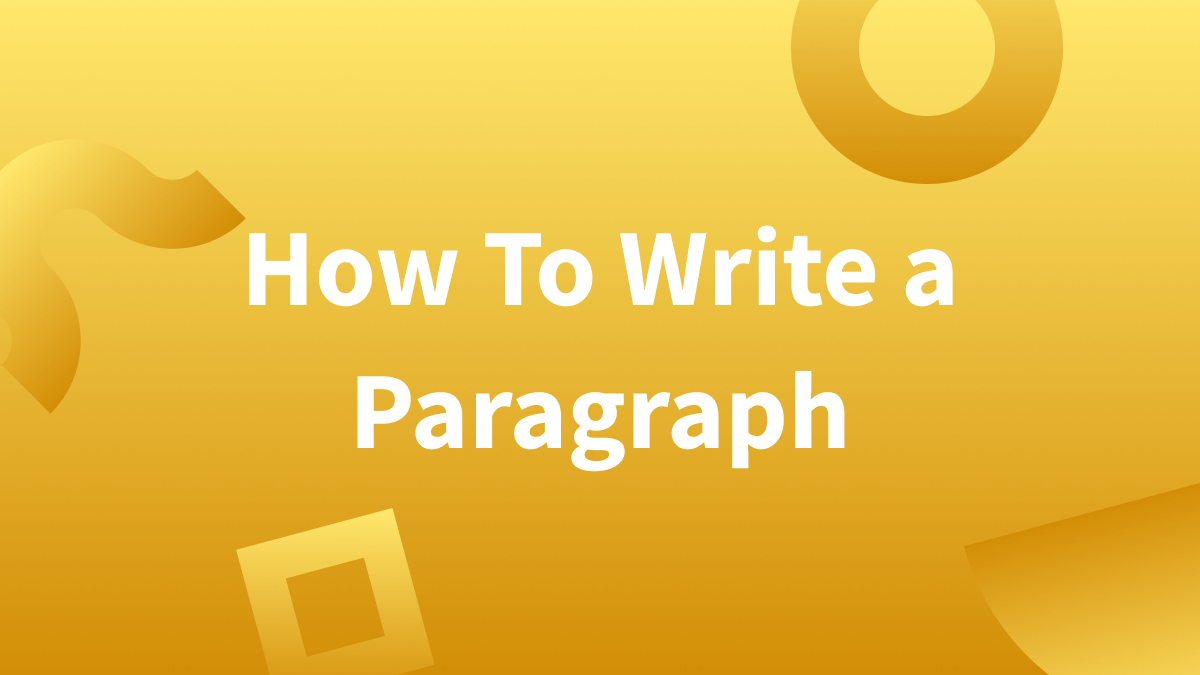- A paragraph is a unit of sentences found within a larger body of text that revolve around one main idea.
- Paragraphs can technically be made up of one sentence or several.
- Each paragraph should include supporting sentences and seamlessly transition into the next one.
What Is a Paragraph?
We’ve covered how to write an introduction and how to write a conclusion. In this article, we will teach you how to write a good paragraph. But first, let’s go over what a paragraph is.
A paragraph is a small body of text within a larger body that revolves around one particular main idea. Because there are various styles of writing—creative, journalistic, and narrative, to name a few—paragraphs can look and read differently depending on the text. However, they all serve the same function: to help advance your writing.
How Long Is a Paragraph?
It is not uncommon for grade school students to learn that a proper paragraph entails at least five sentences. This isn’t necessarily true, though. A single paragraph can range from one sentence to five, ten, or even more. Single-sentence paragraphs are especially common in journalistic writing. But what makes a paragraph, well, a paragraph, is that it revolves around a central idea before moving on to the next.
Paragraphs range in size depending on the complexity of the topic. And although this isn’t one-size-fits-all advice, writing guides often recommend shorter paragraphs over longer ones. A break between paragraphs can serve as a small pause, or rest, for the reader. Learning how to break a paragraph strategically even if you’re not done writing about the main point takes practice. If you can take the main point of the paragraph and break it into smaller points, do that (like how we broke this section about paragraph size into two paragraphs).
How To Write a Paragraph
Well-developed paragraphs are important. While the introduction prepares the readers for what you’re going to write about, the paragraphs are where you get to support your claims or the central idea of the text.
Here you’ll find a few tips that’ll help you write the perfect paragraph:
1. Choose the main idea of the paragraph and write a topic sentence.
Once you decide what the central focus of a particular paragraph will be about, introduce it with a topic sentence. Think of topic sentences as a signpost that guides your readers so that they know what to expect. The best place for a topic sentence is at the beginning of a paragraph.
2. Include supporting sentences.
After you’ve written your topic sentence, you should then write supporting sentences—sentences that help prove or establish that point you’re trying to make. These sentences vary depending on the type of writing, but they can include examples, explanations of examples, anecdotes, data, or anything else that’ll help the reader understand your message.
3. Improve flow and readability with transition sentences.
Once you’ve written the supporting sentences, then you should signal to the reader that you’re about to move on to the next point. You can do this with transition words or transition sentences. An abrupt change of topic can confuse readers, so it’s better to seamlessly move on to the next paragraph.
Bonus Tip: Use LanguageTool to ensure error-free writing
All these tips are important, but they won’t make much of a difference if your writing is plagued with spelling errors and grammar mistakes. That’s why it’s a good idea to use LanguageTool as your writing assistant. This multilingual text editor will help you write masterfully by correcting all spelling, grammar, and style flaws.
Example Paragraph Using The Tips Above
This is an example paragraph that uses all the previously mentioned tips:
You may be wondering how spending time in nature can help your well-being. To begin, spending time in nature helps reset the body’s circadian rhythm—or schedule of your body’s physical, mental, and behavioral processes. When one’s circadian rhythm is reset to its natural cycle, it results in better sleep. And better sleep means you look, feel, and function better. Several studies have shown that daylight plays a big role in our circadian rhythm. The bright light of the day signals to the body that it’s time to wake up, whereas the dimming sunset lets the body know it’s time to go to sleep. A good night’s sleep is something we can all be grateful for. This leads me to my next point—spending time in nature can help increase gratitude.
How To Write Proper Paragraphs
Think of paragraphs as the glue that holds your writing together. Without them, sentences would just be floating around at random, and your readers would be forced to try to make sense of them. As with any other piece of writing, enough time should be allotted when writing paragraphs. Remember to include a topic sentence, add supporting sentences, and smoothly transition to the next paragraph.

